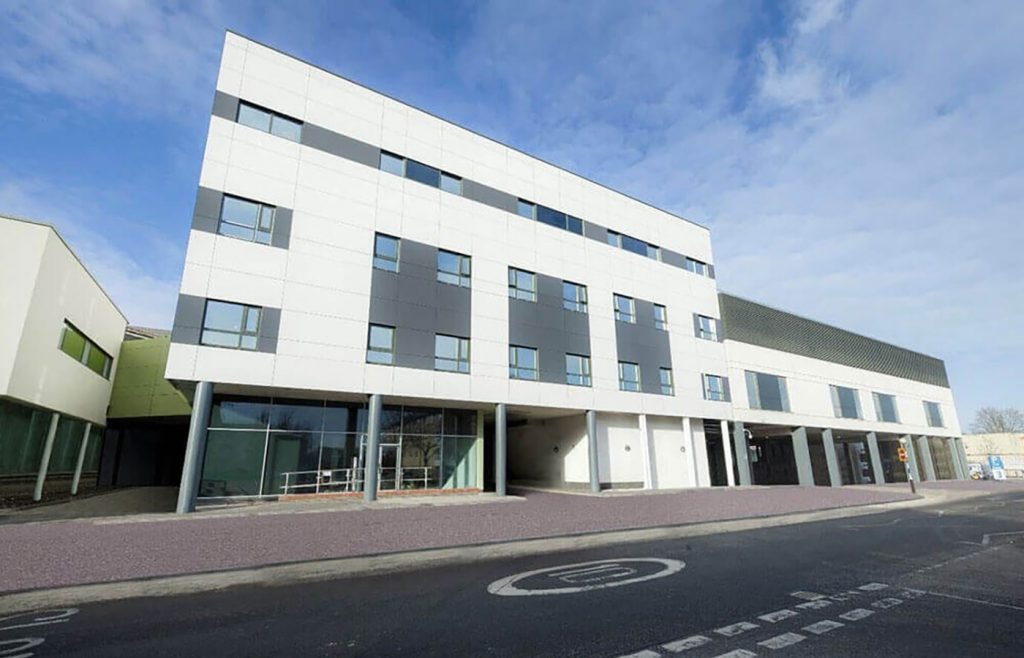
Modular construction is fast becoming the construction method of choice in many industries due to the reduced costs, improved construction times, the flexibility that it provides and the consistent quality that can be produced. In particular, hospitals, schools and hotels experience the biggest benefits in mass-producing modules.
Widely accepted as an improved form of construction over traditional construction methods, modular construction also has benefits for the environment that cannot be questioned. Despite being accepted as a superior form of construction, modular construction was still largely ignored for the past 70 years. This was usually down to a lack of knowledge and the ill-informed assumption that complex buildings could only be constructed the traditional way.
Attitudes are changing rapidly, and health industries all over the world are being joined by prisons, schools and offices in using modular construction for their buildings.
What is Modular Construction?
Modular construction is where sectional buildings that are called modules are constructed off-site. Constructed in a factory these prefabricated units are more cost-effective than traditional construction practices. Additionally, they are constructed in about half the time compared to traditional buildings.
In much the same was as Lego pieces, these modules are designed to be placed next to each other and stacked once transported to site. This enables the user to create separate or larger rooms that can be connected together.
In most cases the modules are already 80% complete when shipped. First fix M&E, for example pipework, is completed in the factory. Second fix M&E, for example wiring, and flooring finishes are completed once the modules have arrived at site.
First examples of modular construction date back to the 19th century. Based in the UK, Henry Manning completed both the design and construction of cottage ‘modules’ that were then transported to Australia and erected. Despite this, it is only in recent years that modular construction has really become a regularly used form of mass construction.
Hospitals, schools and hotels are three types of buildings that see the best benefits of modular construction. This is especially due to the minimal disruption that modular construction causes to neighbouring occupied facilities and public areas.
Modular units can be constructed in various sizes depending on the magnitude of the completed project. On occasion, these modules could be as large as a trailer that has been designed to form a part of a much larger construction such as a multi-story building. No matter the size of the modules, the theory of being able to interconnect with other modules is the same.
How Does Modular Construction Work?
Designed and constructed in a factory-setting, modular buildings streamline the construction process as well as provide a more cost-effective solution for the client. Labour costs are drastically reduced, in addition to benefits to the environment that cannot be ignored.
Both traditional and modular construction methods begin in the same way. The planning, design and engineering and the preparation for site are all done in similar ways, however after that the construction processes take different paths.
Once site prep is complete for traditional construction, the process of laying the foundations would start. This is a lengthy process that has to be completed before the actual construction steps of the building can take place. Modular construction however saves this time by building the modules in the factory whilst this foundation work takes place on site. By the time the foundations are laid, the modules are already finished and ready to be shipped and installed on site.
At this point in time for traditional construction practices, the framing of the property would have just begun. This would then be followed up with the roofing, siding and insulation, fitting of the doors, windows and plumbing and electrical installations, before the final interior and exterior finishes can be applied. Modular construction, on the other hand, comes complete with all this already.
How Can Modular Building Help the Healthcare Industry?
Cost-efficiency for the NHS is just one of the big benefits of choosing modular construction. In addition, it is widely known that the NHS is facing bed shortages so the need for the quick construction of additional buildings nationwide is of priority.
So what are the core modular benefits for the healthcare industry when using modular construction compared to traditional construction practices?





